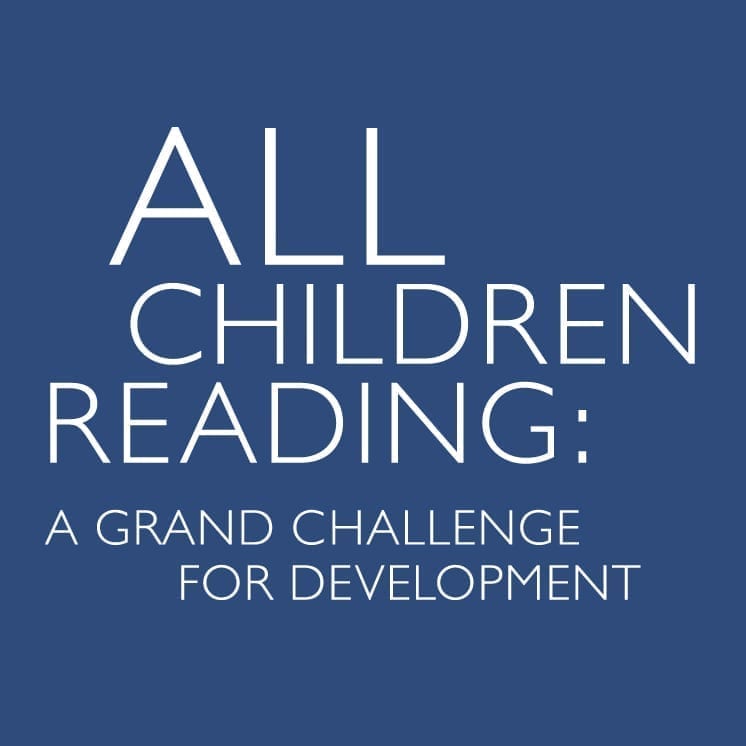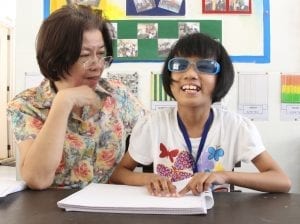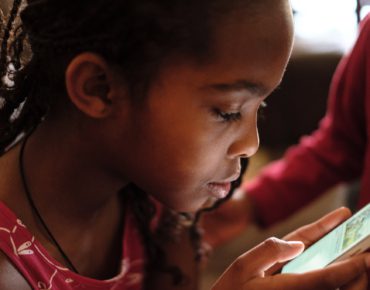October 12, 2016
Adaptive technology helps children who are blind, low vision learn to read
Nine-year old Alexa was born prematurely and diagnosed with Retinopathy of Prematurity, which caused vision loss in both eyes. She’s one of an estimated 285 million people worldwide who are blind or low vision.[i] Alexa also has cerebral palsy, so she uses a wheelchair.
But this doesn’t stop Alexa from attending school. She’s in grade 1 at a school in the Philippines. Her mother takes her to school every day and her only absences are a result of one of them being sick. According to her resource teacher, Ma’am Jennifer, “They are both determined to go to school. Alexa loves to learn.”
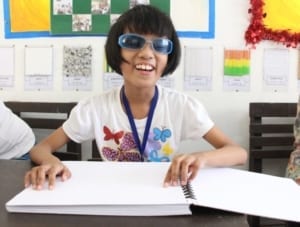

Alexa reads a braille books made by her teacher.
Alexa’s school is a participant in Resources for the Blind’s “Reading Beyond Sight” pilot project funded by a grant from All Children Reading: A Grand Challenge for Development (ACR GCD). The project enables the Department of Education to create 500 volumes of online, accessible, supplementary reading materials and lessons in Filipino, English, and 15 dialects. A package of tools and technical support is offered to intervention schools to provide materials in accessible formats (e.g. large print, braille, audio); improve the reading environment (e.g. closed-circuit television (CCTV), magnifiers, braille embossers and DAISY players); and increase motivation of students, parents and teachers to support early grade reading.
Ma’am Jen shared the challenges she faced before this project “It was really difficult to teach 13 children with visual disabilities. My class is a combination of children who are blind and those with additional disabilities. We did not have enough tools and materials to teach them. My only assistive tools were the slates and stylus.”
Ma’am Jen commented on how the braille readers and extensive reading resources provide a rich learning experience for the children. “My pupils, particularly Alexa, are always excited about reading the stories and she can even share the stories with her sibling. Also, because of Alexa’s improved reading skills, she can now create simple stories on her own. She became inquisitive and eager to learn things that she does not understand. I admire her determination to learn braille even with the other challenges she has to face.” Ma’am Jen shared that the technology has eased the process of teaching reading, giving her more time for one-on-one lessons with her students.
I never thought we would have an opportunity for Alexa to go to school and learn. I am so thankful for Ma’am Jen, I can see that my child is learning from her. ~Alexa’s mother
Alexa’s mother also expressed gratitude for the project. “I never thought we would have an opportunity for Alexa to go to school and learn. I am so thankful for Ma’am Jen, I can see that my child is learning from her. We were so happy when the equipment arrived and became even more motivated to go to school. Alexa is enjoying the braille display and is excited to read. Now even if Ma’am Jen is busy, she makes sure we have reading materials to bring home.” To make sure she continues to improve, her parents help her with reading at home. Through the support of family, teachers, and new technology—and her own strong, optimistic vision for success—Alexa is learning to read, opening a world of possibilities.
It’s people like Alexa that we celebrate on World Sight Day, an annual opportunity to focus global attention on advancements by and for those who are blind/low vision as well as remaining challenges where innovative solutions are still needed. More innovations, like those Alexa and her teachers are now using, are still needed. Which is why one of the focus areas for ACR GCD is to identify, source and disseminate the most promising technology-based solutions that address barriers preventing children with disabilities in developing countries from learning to read.
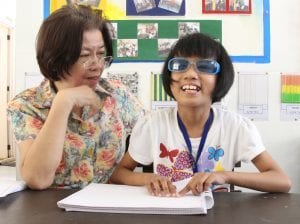

Alexa reads a braille story book guided by her specialist teacher.
Alexa is one example of how All Children Reading is helping children who are blind/low vision learn to read with innovative technologies. To learn about other ACR GCD grantees enhancing early grade reading outcomes for learners with disabilities, we invite you to visit our website.
All Children Reading: A Grand Challenge for Development, a partnership of USAID, World Vision and the Australian Government, is an ongoing series of grant and prize competitions that leverages science and technology to source and disseminate scalable solutions to improve literacy skills of early grade learners in developing countries. To check out more stories from our grantees, partnership opportunities, or to participate in future competitions, visit www.AllChildrenReading.org or follow us on Twitter.
